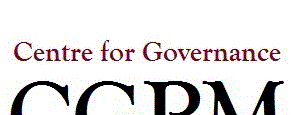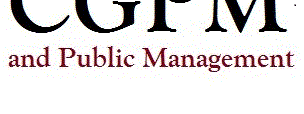SSHRC Research Project on International Governance Reform (2007-10)
Overview
As Francis Fukuyama (2004) notes, weak or failed states are the source of many of the world’s most serious problems, and so state-building and the reconstruction of failed states is one of the major challenges of our time. This recent imperative towards public sector reform follows on the heels of the movement in the 1980s and 1990s among the OECD countries to introduce “new public management” (NPM – generally leaner public organizations coupled with a greater reliance on market mechanisms for service delivery), efforts to rebuild central and Eastern communism’s collapse, and the growing realization in the technical assistance community that institutions mattered, and that economic growth depended as much on competent public administration as it did on market liberalization.Why and how did modernizing government through public sector reform become a global movement?
Four hypotheses will guide the research. The first is that the movement can be explained by the emergence of a global network of institutions and organizations, governmental, inter-governmental and non-governmental, collectively dedicated to public sector reform. The network facilitates the flow of ideas, debates, models, and practices around the world. Second, while there are strong pressures towards developing standards or best practices, the network is marked by divergent and disparate views as well, depending on the interests of organizations and the nature of network collaboration and competition. Third, the flow of ideas is facilitated by a range of different instruments, from naming and shaming (e.g., Transparency International), to discussion fora and reports (e.g., OECD), to tied aid in technical assistance (e.g., World Bank). Fourth, actual public sector reform projects involve a dense interaction among members of the network in specific sites.
The research will make several contributions. It will help us better understand the dynamics of public sector reform efforts, the instruments used by different organizations, and the reasons why they do or do not work. To date, the focus has been on single country studies, or comparative analyses; the impact and effect of global networks dedicated to public sector modernization has been occasionally noted, but never explored in depth. The work should have strong practical implications for the development and technical assistance policy communities. Another contribution will be to the literature on policy transfer, learning and diffusion. As noted in the detailed description that follows, that general literature has only very recently begun to examine international governmental organizations and global policy networks. This would be among the first examinations of the global network around modernizing public management. The project will also closely examine the instruments used by different organizations to effect policy and governance change. Of particular interest is the emerging emphasis on governance indicators and standards of “good governance.”
As well, the research will draw an emerging literature on complexity and network theory, and use it as a heuristic to study the nature of the network as a network – to date, the work on global networks has used the term largely as a descriptor, without drawing out the implications of network dynamics as seen in complexity theory.
The project will emphasize research training at an advanced level for a number of doctoral students over the three year period: questionnaire design, supervised interviews, database development, and literature searches using advanced electronic tools. The strategy for the communication of results will involve a project web page, conference papers, refereed articles, and ultimately, the submission of a manuscript to a peer-reviewed publisher.



